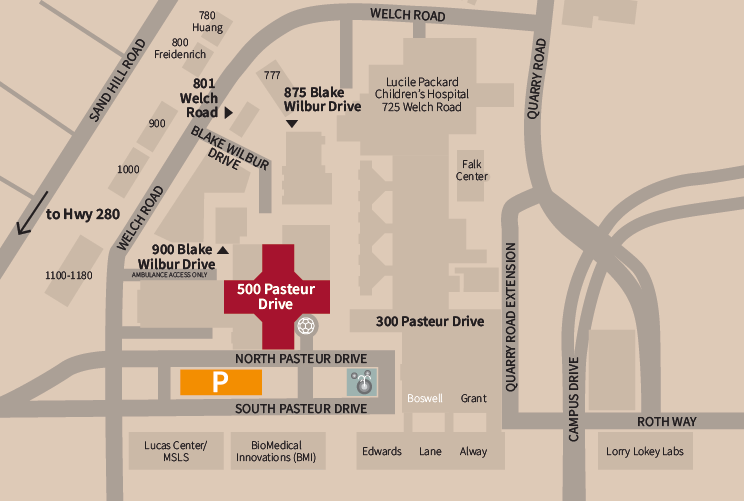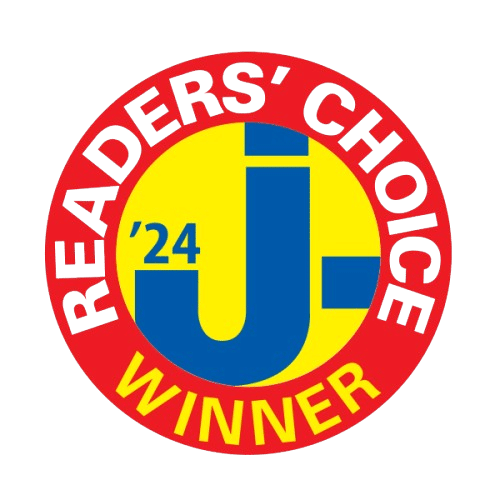Home Care in Atherton, California
To Learn More About Home Care Services Available in Atherton, Please Fill Out Our Form Below. One of our care professionals will connect with you to answer your questions.
More Information About Atherton, CA
The entire area was originally part of the Rancho de las Pulgas. During the 1860s, Atherton was known as Fair Oaks. In 1923, it was decided to rename the town in honor of Faxon Dean Atherton, a former 19th century landowner on the south peninsula.
At the 2020 census Atherton had a population of 7,193 and 2,252 households, the homeowner vacancy rate was 0%. The population density was 1,424.3 inhabitants per square mile (549.9/km2).
There was an average 2.94 people per household, 89.2% of homes were owner occupied and 10.8% were renter occupied. The racial makeup of Atherton was 5,403 (75%) White, 1,655 (23%) Asian, 124 (1.7%) African American, 18 (0.3%) Native American, 107 (1.5%) Pacific Islander, 3.2% from two or more races. Hispanic or Latino of any race were 540 (7.5%) people.
The median age was 49. For every 100 females there were 100.1 men.
The age distribution was 1,472 people (20.5%) under the age of 18, 862 people (5.6%) aged aged 18 to 24, 932 people (12.9%) aged 25 to 44, 2,123 (29.5%) aged 45-64 and 1,813 people (25.2%) over the age of 65.
Median income for a household was over $250,000. Males had a median income $102,192 versus $53,882 for females. About 1.1% of families and 2.6% of the population were below the poverty line, including 0.5% of those under the age of 18 and 1.1% of those 65 years or over.
Property Shark ranked first Atherton for the fourth year in a row as the most expensive ZIP code in the United States in 2022 with the median home price at $7,900,000.
- Paul Allen, late Microsoft co-founder.[53]
- Marc Andreessen, co-founder of Netscape and general partner at Andreessen Horowitz.[54]
- Mohamed Atalla, Egyptian-American engineer, inventor of MOSFET transistor, founder of Atalla Corporation
- Gertrude Atherton, American author
- Faxon Atherton, namesake of Atherton, California
- CiCi Bellis, tennis player
- Lindsey Buckingham, of Fleetwood Mac[55]
- Nick Clegg, Meta Platforms executive and former Deputy Prime Minister of the United Kingdom, and his wife, Miriam González Durántez, a lawyer[56]
- Ty Cobb, Hall of Fame Major League Baseball player
- Stephen Curry and Ayesha Curry, NBA star and his family moved to Atherton when the Golden State Warriors moved to San Francisco in 2019.
- Timothy C. Draper, venture capitalist and founder of Draper Fisher Jurvetson[57]
- Clay Dreslough, game designer, raised in Atherton
- Douglas Engelbart, computer engineer
- Drew Fuller, actor, known for role on Charmed and Army Wives
- Bill Gurley, venture capitalist; general partner at Benchmark.[58]
- Elizabeth Holmes, former biotechnology entrepreneur convicted of fraud.[59]
- Ben Horowitz, co-founder of Andreessen Horowitz.[60]
- Ron Johnson, former senior executive at Apple
- Guy Kawasaki, venture capitalist
- Bobbie Kelsey, Stanford University women’s basketball assistant coach
- Andy Kessler, author of books on business, technology, and the health field
- Jan Koum, co-founder of WhatsApp
- Charlie Kubal, music producer, created 2010’s Mashup Album of the Year, the notorious xx, grew up in Atherton
- Douglas Leone (born 1957), billionaire venture capitalist[61]
- Andy W. Mattes, CEO of Diebold.[62]
- Willie Mays, Hall of Fame Major League Baseball player[63]
- Rajeev Motwani, professor, computer science, Stanford University[64]
- Farzad Nazem, former chief technology officer of Yahoo! and one of its longest-serving executives, now an angel investor
- Chamath Palihapitiya, CEO of Social Capital, and board member of the Golden State Warriors.
- J. B. Pritzker, Governor of Illinois and co-founder of the Pritzker Group
- Tom Proulx, co-founder of Intuit.[65]
- Vivek Ranadive, chairman, CEO and founder of TIBCO Software[66]
- Jerry Rice, Hall of Fame football player[67]
- George R. Roberts, co-founder of Kohlberg Kravis Roberts.
- Ted Robinson, San Francisco 49ers play-by-play announcer
- Maureen Kennedy Salaman, author and proponent of alternative medicine
- Sheryl Sandberg, former chief operating officer of Meta Platforms.
- James R. Scapa, co-founder, chairman and CEO of Altair Engineering
- Eric Schmidt, former executive chairman and CEO of Google[68]
- Charles R. Schwab, founder and CEO of the Charles Schwab Corporation[69]
- Shirley Temple, child movie star and diplomat
- Y.A. Tittle, 49ers & Giants QB, NFL HOFer, resident until his death in 2017
- Bob Weir, of the Grateful Dead and Ratdog, raised in Atherton[70]
- Steve Westly, former State Controller of California, major Democratic Party fundraiser, and venture capitalist.[71]
- Meg Whitman, former president and CEO of Hewlett-Packard, former CEO of eBay[72]
- Dennis Woodside, president of Impossible Foods, former COO of Dropbox
- Quadeca, YouTuber/Rapper grew up in Atherton
The Stanford Hospital complex is comprised of two, adjacent buildings. If you are uncertain of your destination, please call: 650-723-4000. Guest Services will be pleased to assist you. A single parking garage serves and offers easy access to both buildings. Visit Stanford Hospital at 300 Pasteur Drive to learn more about the other building.

500 Pasteur Drive
Stanford, CA 94305
International Patients
Phone: +1 650-723-8561
Email: IMS@stanfordhealthcare.org
Healing humanity through science and compassion, one patient at a time.
Stanford Health Care, along with Stanford Health Care Tri-Valley and Stanford Medicine Partners, is part of the adult health care delivery system of Stanford Medicine. Combining clinical care, research, and education to advance the understanding and practice of medicine, we provide compassionate, coordinated care personalized for the unique needs of every patient.
We are proud to provide patients with the very best in diagnosis and treatment. And we are pioneering leading-edge therapies that will change the way health care is delivered tomorrow.
Stanford Medicine is an ecosystem comprising the School of Medicine and the pediatric and adult health care delivery systems. Together, we harness the full potential of biomedicine through collaborative research, education, and clinical care for patients of all ages. Precision Health is at the core of what we do, preventing disease before it strikes and treating it decisively when it does. Together, uniting our diverse perspectives and collective expertise for the greater good, we are Stanford Medicine.
Delivering Better Care
Stanford Health Care is creating new delivery models, leveraging our advanced resources to create seamless continuity of care for every patient. From our suite of virtual care services – to our primary care offices throughout the Bay Area, outpatient clinics in Redwood City and Palo Alto, and Stanford South Bay Cancer Center – people from around the region and around the world turn to Stanford Health Care for comprehensive solutions to meet all of their health care needs.
At the center of our health system will be the most advanced hospital in the world. The new Stanford Hospital will make our bold vision for compassionate, coordinated, leading-edge care – personalized for the unique needs of every patient – a reality for more people than ever before.
Although the leadership of Stanford Health Care and Stanford University work in close partnership, the hospital and the university are separate legal entities. Stanford Health Care cannot access the university’s endowment, nor is the endowment part of the hospital’s budget.
Quality of Care
We are committed to providing, clear, accurate and honest information about our quality of care, so that patients can make informed health care decisions.
Uniquely Stanford
We are responsible for some of the most important medical advances of the 20th century, and we continue building on our legacy in the 21st.
Community Partnerships
We dedicate considerable resources to improve the health and well-being of the community.
Bondholder Information
Obtain information about Stanford Health Care’s bond programs and finances.
340B Savings in Action
The 340B program creates opportunities for Stanford to offer expanded services to improve the health of our community, and ensure that the cost of prescription medication is not a barrier for patients in need.
Crisis Standard of Care
As a Level 1 trauma center, Stanford Health Care always has a “crisis standards of care” document in place, which defines our organization’s plans for responding in the event that resources — such as beds, staffing, space or equipment — become scarce or unavailable to provide normal standards of care. We are currently functioning with normal surge protocols.
Little House
At Little House, we strive to empower older adults with the freedom to stay active in their community. We offer a variety of health and wellness services that enrich the lives of seniors in the mid-peninsula through fitness classes, art activities, educational lessons, and more.
Our History
We come from a long-line of progressive, forward-thinking folks committed to community welfare. In 1947, our founder Beth Kuechler rallied a group of passionate women to create Peninsula Vounteers. Their first project was Stanford Day Care Nursery, in cooperation with Stanford University, which exists to this day. PVs then shifted towards education, creating scholarship programs for a variety of universities until 1981. Now, PVI is committed senior care and is home to 300 members.
800 Middle Avenue
Menlo Park, CA 94025
Phone:(650) 272-5000
Fax: (650)-326-9547


About San Mateo County
California’s San Mateo County, sometimes known as the County of San Mateo, is a county in the United States. There were 764,442 people living there as of the 2020 Census. The county seat and third-most populous city in the region after Daly City and San Mateo is Redwood City.
About Atherton, California
United States of America’s San Mateo County has the incorporated town of Atherton. 7,188 people called it home as of 2020.
Driving Directions from Atherton to Aviva In-Home Care
Atherton, California
Get on US-101 N in Menlo Park from Fair Oaks Ln and Marsh Rd
7 min (2.3 mi)
Follow US-101 N to Mariposa St in San Francisco. Take exit 433A from US-101 N
26 min (26.6 mi)
Drive to Rhode Island St
2 min (0.3 mi)
Aviva In-Home Care
350 Rhode Island St Suite 240, San Francisco, CA 94103
Directions from Atherton to Aviva In-Home Care
Aviva In-Home Care Provides Senior Home Care in Atherton
What is companion care at home?
Companion care at home is a type of in-home care that involves providing companionship, support, and assistance to seniors or individuals who need help with daily tasks and activities. This type of care can include help with things like grocery shopping, meal preparation, light housekeeping, and transportation to appointments, as well as social activities and emotional support. Companion care can be an important resource for people who want to remain independent and in their own homes, but need a little extra help to do so.
What is the difference between a caregiver and a companion?
A caregiver is a person who provides care and support to someone who is unable to take care of themselves, such as a senior citizen or an individual with a disability. A caregiver may provide a range of services, from basic assistance with daily tasks, such as bathing and dressing, to more complex medical care, such as administering medication or providing wound care. In contrast, a companion is someone who provides social and emotional support to an individual, typically by engaging in activities together and providing companionship. A companion may also provide some basic assistance with daily tasks, but their primary focus is on providing emotional support and companionship.
What are the duties of a companion or sitter?
The duties of a companion or sitter can vary depending on the individual’s needs and preferences. In general, however, the primary role of a companion or sitter is to provide social and emotional support, as well as some basic assistance with daily tasks. This may include things like engaging in conversation and activities with the individual, providing companionship and emotional support, and helping with light housekeeping tasks, such as laundry and meal preparation. A companion or sitter may also provide some basic assistance with personal care, such as helping with bathing and dressing and may help with transportation to appointments or errands. Overall, the goal of a companion or sitter is to help the individual maintain their independence and quality of life.
What does a companion do for the elderly?
A companion for the elderly typically provides social and emotional support, as well as some basic assistance with daily tasks. This can include things like engaging in conversation and activities with the senior, providing companionship and emotional support, and helping with light housekeeping tasks, such as laundry and meal preparation. A companion for the elderly may also provide some basic assistance with personal care, such as helping with bathing and dressing and may help with transportation to appointments or errands. The goal of a companion for the elderly is to help the senior maintain their independence and quality of life and to provide them with the support they need to continue living at home.
Does Medicare cover a companion?
Medicare does not cover companion care services, which are considered to be non-medical in nature. Medicare, which is a federal health insurance program for seniors and individuals with disabilities, covers a range of medical services and treatments, but it does not cover non-medical services, such as companion care. If you are in need of companion care services and have Medicare, you will need to pay for these services out of pocket or through private insurance. It’s important to check with your insurance provider to determine what types of services are covered.
What is the difference between companion care and personal care services?
Companion care and personal care services are both types of in-home care that can be provided to seniors and individuals with disabilities who need help with daily tasks and activities. The main difference between the two is the focus of the care. Companion care is focused on providing social and emotional support, as well as some basic assistance with daily tasks, such as meal preparation and light housekeeping.
Personal care services, on the other hand, are focused on providing more extensive assistance with activities of daily living, such as bathing, dressing, and toileting. Personal care services may also include more advanced medical care, such as wound care and medication management. Overall, the main difference between the two is the level of care provided and the focus of the services.
Why Choose Aviva In-Home Care for Companion Care Services?
- A model based on family-centered care
Aviva works closely with your family, throughout the care process, to make informed decisions about the services and support the client and family receive. - Highly experienced staff
An expert management team that understands healthcare delivery, caregivers with multiple years of experience, and an organization focused on continual staff training & education. - Nurse oversight of care
Utilize the clinical expertise of RN supervision to ensure that we deliver a quality experience, are compliant with physician orders, and are continually improving. - Private, San Francisco-based business (not a franchise)
Our focus is on the well-being of San Francisco’s elderly residents – your community is OUR community. - Embedded Care Management
We ensure optimal care coordination by providing 2 hours of weekly case management time (by our Client Care Manager) free of charge for each client. - Hands-on management by the owner
Direct owner involvement in the administration of care, and communication with families. - Affiliation with a national network of home care agencies
Member of The Seniors Choice, an organization that shares best practices, promotes continual learning/education, and develops service competencies within its network.




